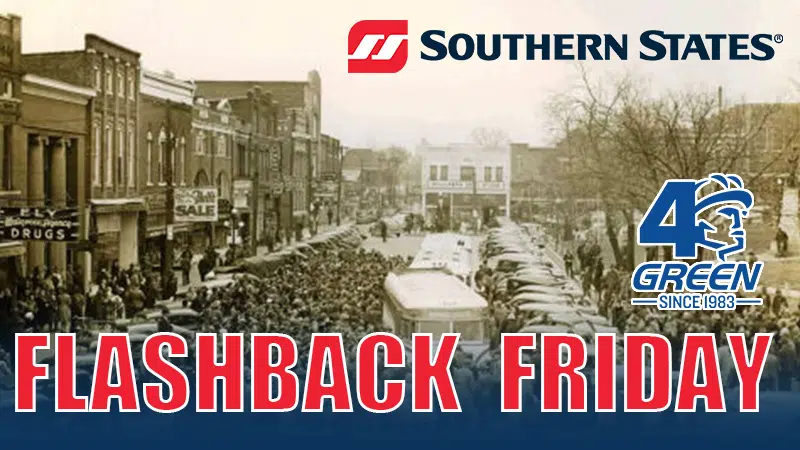By JENNIFER MOONSONG
Glasgow News 1
With the celebration of Barren County’s 225th underway, it’s a fitting time to look back at the county’s earliest days. Barren County came to be in 1798. The county was authorized by the Kentucky legislature on Dec. 20, 1798. That same year, Glasgow was named and deemed the county seat.

The north side of the Glasgow Public Square, looking east, in the 1860s.
Submitted
The location of the county seat was a point of controversy by 1799, and an election had to be executed to determine the location. The two locations voted between were Jon Gorin’s site of the Big Spring, and Richard Garnett’s spring a few miles to the north on Beaver Creek. These sites were prime potential locations because they both offered plentiful water sources, a necessary asset for the success of an established county and county seat.

Travel was quite different in Barren County’s early days. This donkey cart was transportation. The house pictured on the left is the site of The Plaza Theatre.
Submitted
John Gorin won by a meager amount of votes, and according to a word-of-moth history passed down by Cyrus Edwards, those votes came from his former fellow Revolutionary War soldiers. Gorin set aside 150 acres and put $200 towards carpenters to erect public buildings, a goodly sum for the time.
It was noted in the writings of Paul Holman, Jr. and Cecil Goode that the Big Spring, situated near the present day northeast side of the town square of Glasgow, “provided copious flow of cool, clear and pure water.”
Nearly 100 years later, Franklin Gorin, the son of John Gorin, spoke of the early days of Barren County and the county seat in an article published in the Glasgow Daily Times in 1876. It said the “town site was a hill and covered in pea vines. Only a few acres had been cleared to the north and east of John Gorin’s cabin, so the few settlers began forthright to clear the public square area. By … 1800 the county court was meeting at the courthouse, which was complete. It was a log construction that did not last long, for in 1802, a commission was appointed to plan a new courthouse which was also constructed of logs.”

The Murrell Hotel about 1895, sits where Commonwealth Broadcasting is today. It was later the Spotswood and eventually the Uptowner.
Submitted
According to Franklin Gorin, the earliest settlers were his father, Henry Miller and John Matthews. In 1799, John Gorin opened a tavern in his cabin. Gorin and other early settlers were known for welcoming newcomers and encouraging commerce; especially to merchants and craftsmen who brought needed skills and services, such as tanners and blacksmiths. Soon after the county west of Glasgow was established, several shops opened. By 1850 — just 52 years after establishing itself as a county — Barren County boasted six boardinghouses, two hotels, seven dry goods stores, three wagon makers, three saddle shops, three drug stores, four family groceries, two pork houses and myriad other establishments. It was home, as well, to one newspaper. Soon other communities within the county blossomed, including Cave City, which was established in 1853 when the Knob City Company comprised of four Louisville businessmen purchased a little more than 342 acres for a town.

A man strolling down Broadway in Cave City with his cow.
Submitted
In the 1870s Glasgow built its own railroad, and there was more substantial growth. The Courier Journal noted that “Probably no other town in Kentucky owes so much to so little railroad.” By 1900, the county was widely sealed and deeply rooted in Kentucky history.

Fountain Corner, the northeast corner of the square, 1900.
Submitted

Comments